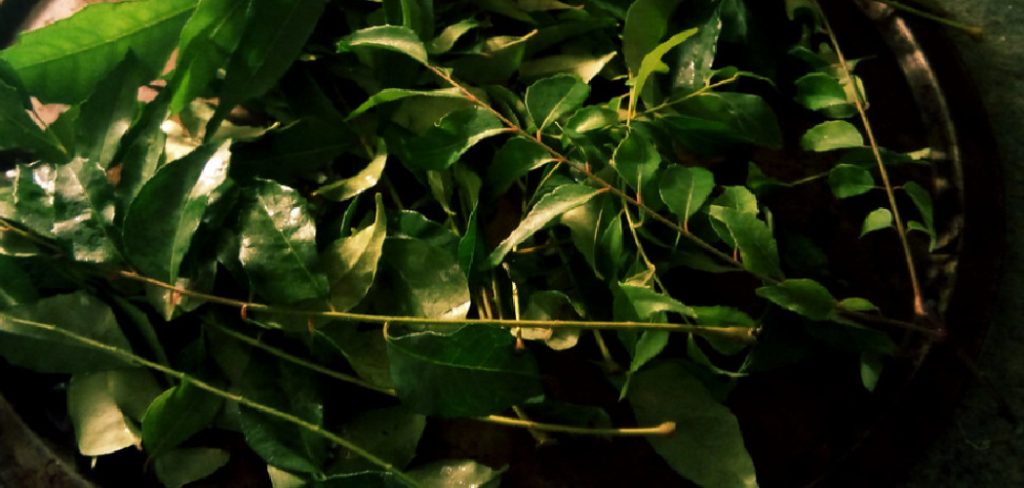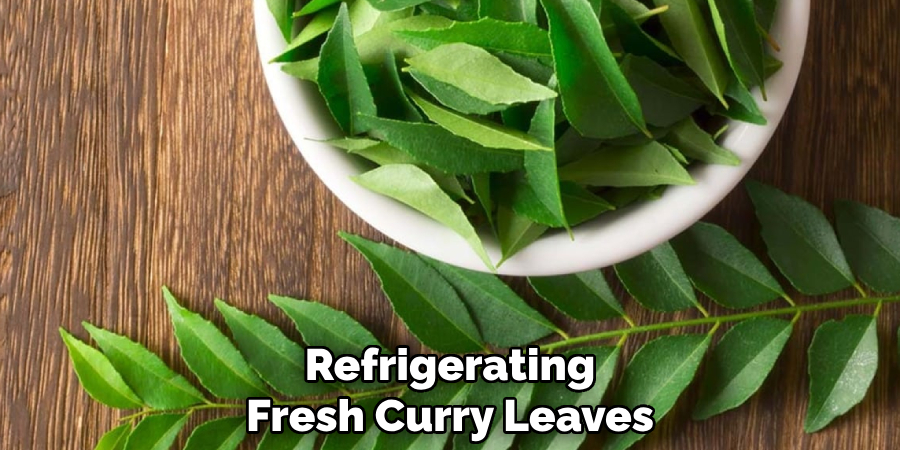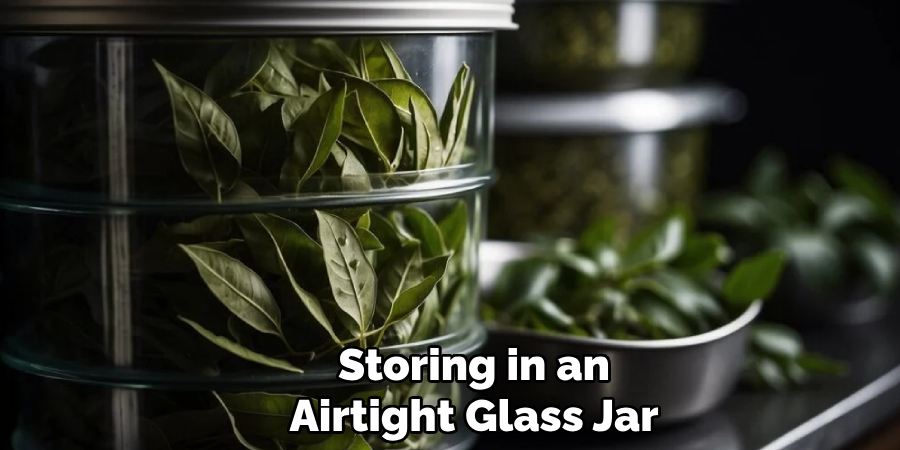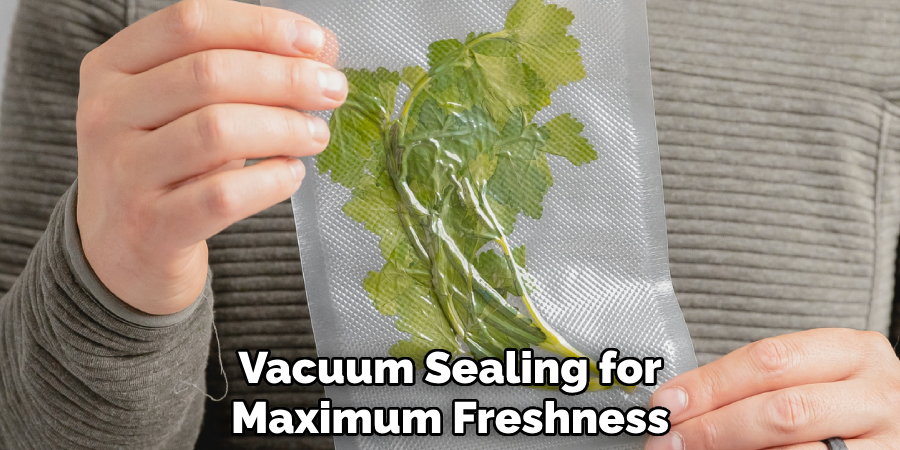Curry leaves are an essential ingredient in many cuisines, especially in Indian cooking, where they add a distinct aroma and flavor to various dishes. However, these delicate leaves can spoil quickly if not stored properly.

Learning how to store curry leaves effectively not only preserves their freshness but also ensures that you can enjoy their unique taste and nutritional benefits for a longer time.
Curry Leaves and Their Importance in Cooking
Curry leaves hold a special place in culinary traditions due to their distinct flavor and aroma. They are widely used in tempering, where the leaves are fried in hot oil along with spices to release their essence, infusing dishes with a rich and earthy taste. Beyond their flavor, curry leaves are also packed with nutrients, including vitamins A, B, C, and E, as well as antioxidants, making them a beneficial addition to meals.
They are a staple in countless recipes, from chutneys and soups to curries and stir-fries, and their ability to elevate even the simplest of dishes is unparalleled. For many, curry leaves are not just an ingredient but a symbol of authenticity in traditional cooking.
Signs of Deterioration in Curry Leaves
To ensure that your curry leaves are fresh and suitable for cooking, it’s important to recognize the signs of deterioration. Fresh curry leaves are vibrant green, firm, and fragrant. When they begin to deteriorate, the leaves may appear wilted, dry, or yellowed. A loss of aroma is another clear indicator that the leaves are no longer fresh.
Additionally, if the leaves become slimy or develop a foul odor, it’s a sign of spoilage, and they should be discarded. Understanding these signs can help you maintain the quality of your ingredients and enhance the flavor of your dishes.
10 Methods How to Store Curry Leaves
1. Refrigerating Fresh Curry Leaves in an Airtight Container
One of the simplest methods to store curry leaves is by refrigerating them in an airtight container. Start by washing the leaves thoroughly and drying them completely with a paper towel. Moisture can accelerate spoilage, so ensuring they are fully dry is essential.
Once dried, place them in an airtight container and store them in the vegetable crisper section of your refrigerator. This method keeps the leaves fresh for up to two weeks while retaining most of their original flavor.

2. Storing in a Paper Towel and Zip-Lock Bag
A highly effective way to extend the freshness of curry leaves is by wrapping them in a paper towel and placing them inside a zip-lock bag. The paper towel helps absorb excess moisture, preventing the leaves from rotting. Seal the zip-lock bag after removing as much air as possible and place it in the refrigerator. This technique ensures the leaves stay fresh for about three weeks.
3. Freezing Curry Leaves for Long-Term Storage
Freezing is an excellent method for preserving curry leaves for several months. To do this, wash the leaves, pat them dry, and spread them on a tray in a single layer. Freeze them for a few hours before transferring them into an airtight freezer-safe bag.
By freezing them individually first, you prevent clumping, making it easier to take out only the amount you need for cooking. Properly stored, frozen curry leaves can last for up to six months without significant loss of flavor.
4. Storing in an Airtight Glass Jar
Another method for keeping curry leaves fresh for longer is to store them in an airtight glass jar. Ensure the leaves are completely dry before placing them inside the jar. Unlike plastic, glass does not retain odors, which helps maintain the leaves’ natural fragrance. Place the jar in a cool, dry area of the kitchen or refrigerator to extend its freshness for about two weeks.

5. Drying Curry Leaves for Extended Shelf Life
Dried curry leaves offer a convenient way to store them for months. To dry them, spread fresh leaves on a clean cloth or tray and leave them in a shaded, well-ventilated area for a few days until they become crisp. Alternatively, you can use an oven at a low temperature to speed up the drying process.
Once dried, store the leaves in an airtight container. While dried curry leaves lose some of their potency compared to fresh ones, they remain an excellent alternative for long-term storage.
6. Storing Curry Leaves in Ghee or Oil
A traditional Indian method to preserve curry leaves involves storing them in ghee or oil. This not only extends their shelf life but also enhances their flavor when added to dishes. Heat a small amount of oil or ghee in a pan, toss in fresh curry leaves, and fry them lightly.
Once cooled, transfer the oil and leaves into an airtight container and store it in the refrigerator. This method keeps them fresh for up to a month and provides a ready-to-use infused oil for cooking.
7. Making Curry Leaf Paste for Easy Cooking
Another innovative way to store curry leaves is by blending them into a paste. Wash and dry the leaves, then grind them into a smooth paste using a little water. Transfer the paste into an ice cube tray and freeze it. Once frozen, remove the cubes and store them in a freezer-safe container or zip-lock bag. Whenever needed, pop a cube into your cooking, making this a convenient and time-saving method.

8. Sun-Drying for Natural Preservation
If you live in a warm climate, sun-drying is an easy and natural method to preserve curry leaves. Spread them on a tray and place them in direct sunlight for a few days. Once they turn brittle, store them in an airtight container. Sun-dried curry leaves can be crushed into a powder for seasoning dishes or stored whole for up to six months.
9. Vacuum Sealing for Maximum Freshness
Vacuum sealing is one of the best ways to store curry leaves for an extended period while maintaining their aroma and color. Using a vacuum sealer, remove all air from a bag containing fresh, dried, or frozen leaves. This prevents oxidation and significantly reduces the chances of spoilage. Vacuum-sealed curry leaves can last for several months in the refrigerator or freezer.
10. Infusing in Salt for Preservation
A lesser-known but effective way to store curry leaves is by preserving them in salt. Layer fresh leaves in a glass jar, sprinkling salt between each layer. The salt helps dehydrate the leaves, preventing mold growth and keeping them usable for months.
Before using, rinse off excess salt and add the leaves directly to your dish. This method not only preserves the leaves but also imparts a mild seasoning to them.
Things to Consider When Storing Curry Leaves
When storing curry leaves, it’s important to consider a few critical factors to ensure their freshness and flavor are preserved effectively:
- Moisture Levels: Excess moisture is the primary cause of spoilage. Always dry the leaves thoroughly after washing before storing them using your preferred method.
- Storage Containers: Use airtight containers or freezer-safe bags that prevent air and humidity from coming into contact with the leaves. Glass jars are particularly effective for maintaining fragrance and freshness.
- Storage Duration: Choose a storage method based on how long you plan to keep the curry leaves. For short-term use, refrigeration works best, while freezing or drying is ideal for long-term preservation.
- Temperature Control: Keep the leaves in a consistent, cool temperature to slow down the spoilage process. Avoid exposure to fluctuating temperatures, as this can degrade their quality.
- Usage Needs: If you use curry leaves frequently, methods like storing in ghee or making a curry leaf paste provide a convenient, ready-to-use option while minimizing waste.
By keeping these factors in mind, you can ensure your curry leaves retain their vibrant aroma and flavor, significantly enhancing your culinary creations.

Common Mistakes to Avoid
When preserving curry leaves, it’s easy to make certain mistakes that can lead to spoilage or a loss of flavor. Here are some common errors to watch out for:
- Storing Wet Leaves: One of the most common mistakes is storing curry leaves with any residual moisture. Wet leaves are prone to mold and spoilage, so always ensure they are thoroughly dried before preservation.
- Using Non-Airtight Containers: Containers or bags that aren’t airtight can expose the leaves to air and humidity, leading to faster deterioration. Always opt for airtight options to maintain freshness.
- Ignoring Temperature Requirements: Storing curry leaves in environments that are too warm or with fluctuating temperatures can degrade their quality. For long-term storage, use the refrigerator or freezer consistently.
- Overcrowding Leaves During Drying: When drying curry leaves, overcrowding them can result in uneven drying and retained moisture. Spread them in a single layer to ensure they dry properly.
Conclusion
Curry leaves are a versatile ingredient, and storing them properly ensures they remain aromatic and flavorful for an extended period. Whether you choose to refrigerate, freeze, dry, or preserve them in oil, each method serves a specific purpose based on your culinary needs.
Thanks for reading, and we hope this has given you some inspiration on how to store curry leaves.
Professional Focus
Angela Ervin, a former interior designer turned blogger, specializes in kitchen design and renovations. Through her website, she blends her passion for cooking with design expertise, sharing practical and creative ideas. Known for balancing functionality and beauty, Angela’s insightful content has made her a trusted voice in home design and lifestyle.
About the Author
Angela Ervin, an experienced interior designer and blogger, combines her passion for kitchen renovations with storytelling. Living in Petersburg with her family, she enjoys cooking and testing her projects firsthand. Known for her humor and relatable style, Angela shares creative, functional design insights through her content, making her a trusted voice in home design.
Education History
University: Virginia Commonwealth University
Degree: Bachelor of Fine Arts (BFA) in Interior Design
- Angela’s education at VCU focused on mastering core interior design principles, including spatial planning, color theory, materials selection, and sustainable design practices.
- She gained hands-on experience through studio projects and collaborative design exercises, which honed her ability to create functional and aesthetically pleasing environments.
- Her coursework also emphasized problem-solving and practical applications of design, preparing her for real-world projects like her self-directed kitchen renovations.
- The program’s strong foundation in both technical skills and creative expression shaped Angela’s ability to seamlessly integrate form and function in her work.


